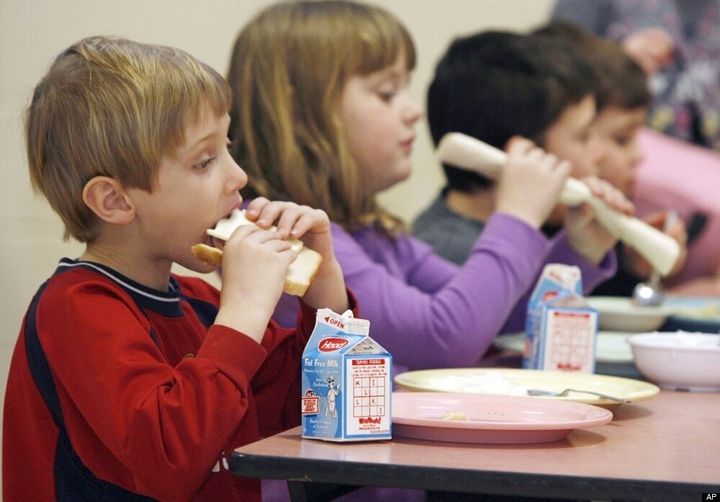
Coming soon to a school near you: The Great Chocolate Milk Debate. The question of whether kids should drink the high-calorie sweetened stuff to get the nutrition they need has long divided nutrition activists and food industry types -- now it's becoming a flashpoint at more and more schools around the country. And if you're tempted to dismiss the whole thing as a tempest in a sippy cup, you should know that more than 70 percent of the milk served in U.S. schools is flavored milk. Even if only half of our nation's 55 million K-12 students choose chocolate milk, that's still roughly 27.5 million kids guzzling it down on a regular basis.
For those who haven't followed the debate, here's a quick primer: Kids need calcium and Vitamin D, which milk contains, but many kids don't like drinking plain milk. Enter chocolate milk, a sweet and often high-fat version of regular milk that offers the same nutrients but far more calories and sugar. The question is, should we offer it in schools to tempt kids who might otherwise forego milk? And that's where the two camps are split.
On one side are the dairy industry types and others who say that many kids aren't going to choose milk otherwise, so chocolate milk is a good way to help them get the nutrients they need. On the other side are health activists who say that there's so much sugar in chocolate milk it's basically a dessert, and by offering it on a regular basis we're contributing to the childhood obesity epidemic. For a good pro-and-con debate on the issue, see this recent L.A. Times column. Also last week the New York Times gave a brief rundown of schools that are banning chocolate milk (District of Columbia and Berkeley, Calif.) and considering a ban (Florida).
In case you aren't sure how you feel about chocolate milk, the National Dairy Council would like to help you decide. Last year the group launched a half-million-dollar campaign in support of chocolate milk; the campaign is now turning up the volume just in time for the school year, with several professional athletes in tow. "Some schools and activist groups are looking to remove low-fat chocolate milk from cafeterias, but this actually could do more nutritional harm than good," the campaign's website declares. "Chocolate milk is the most popular milk choice in schools and kids will drink less milk (and get fewer nutrients) if it's taken away."
The campaign's promotional materials name some heavy hitters (the American Academy of Pediatrics, the American Academy of Family Physicians, the American Dietetic Association) as supporting the "3-a-Day of Dairy" program encouraging Americans to consume three daily servings of "low-fat or fat-free milk and milk products" to improve overall health.
Still, it's hard to imagine any pediatrician or nutritionist encouraging a kid who's struggling with weight issues to choose chocolate milk every day in the lunch line. In fact, most of the kids we know would choose chocolate milk in a heartbeat, if given a choice, just like they would eat a brownie first if it were sitting right in front of them. Because it's chocolate and they're kids. That's why we think the Berkeley and D.C. school districts might be on to something. Chocolate milk can't be blamed for obesity if it's not even on the menu.